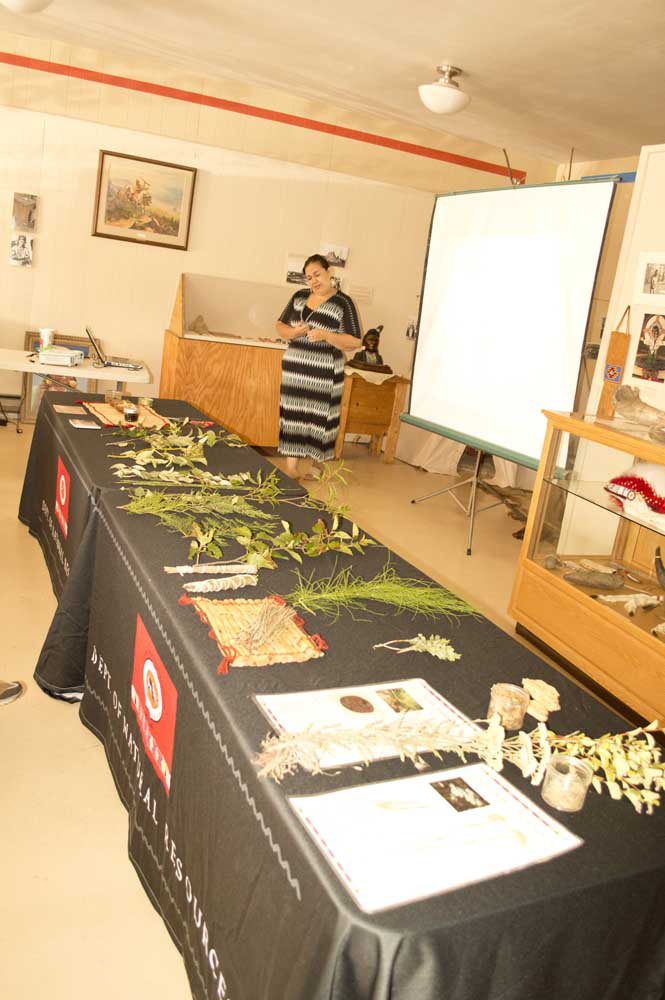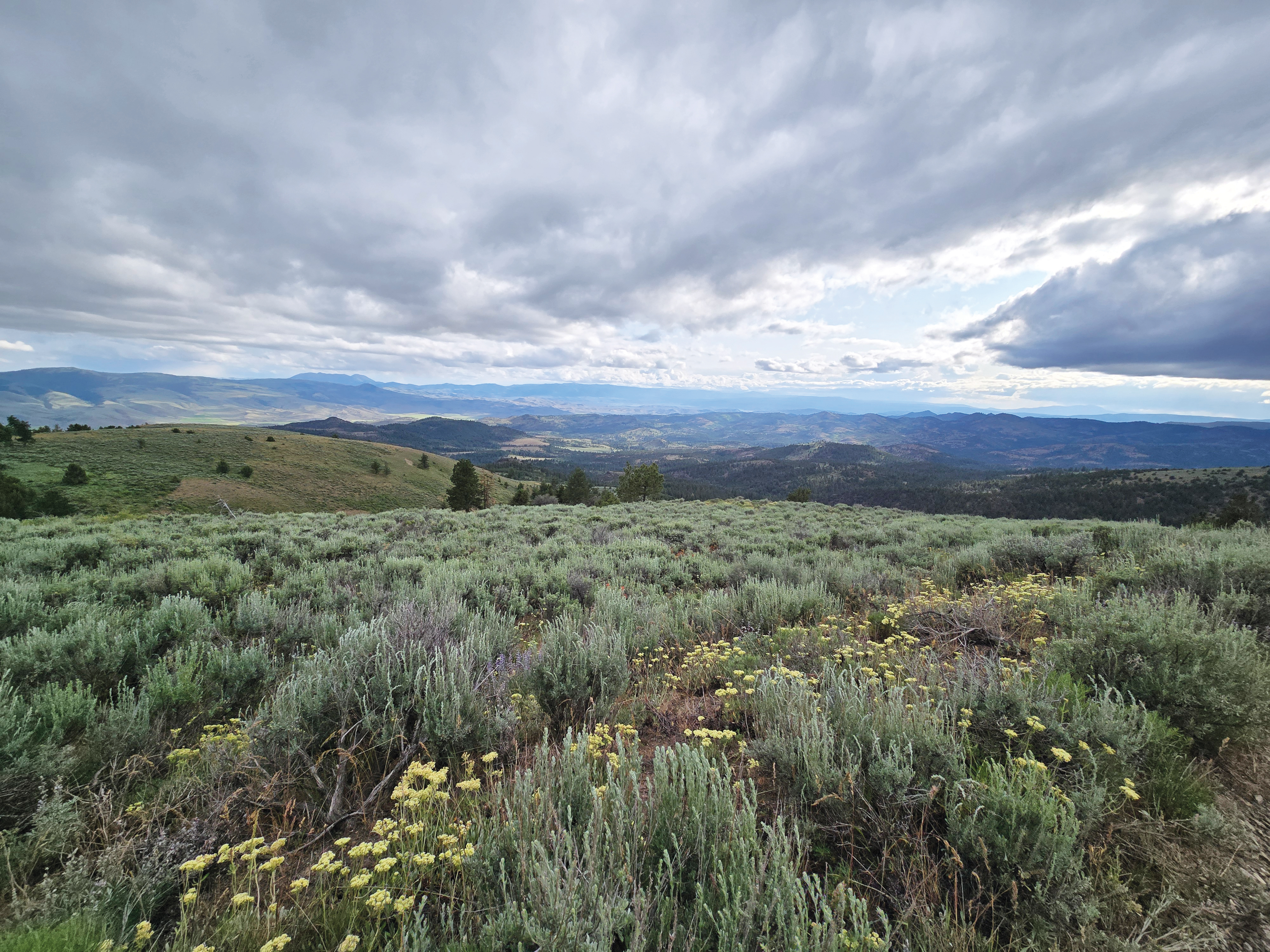Land Trust outing shows importance of foods to Native culture
Published 10:42 am Tuesday, July 12, 2016

- Wallowa Band Nez Perce descendant Wenix Red Elk stands beside a table of local flora used as food by Native American tribes.
Several dozen people ignored rain-threatening skies Saturday morning to journey to the Homeland Project in Wallowa for an Into the Wallowas outing focused on Native American foods.
The outing, part of Wallowa Land Trust’s summer series, focused on common plants in the area that Native Americans utilized for sustenance and how their culture integrated foods and resource care into the daily fabric of their lives.
The morning opened with a brief introduction to native flora by biologist turned botanist Ralph Anderson before moving to the longhouse, where local Nez Perce tribal member Joe McCormack spoke of the role of prehistoric and contemporary longhouses in tribal culture as well as a history of the nearly completed on-site longhouse.
Afterward, Anderson led the party on a brief walk near the longhouse showing several nutritious and/or medicinal “weeds,” including Tumble Mustard and even nettles. Although Anderson said one gets use to the nettle stings, no one cared to test the statement’s validity. Anderson stopped at various points to demonstrate the uses of more common flora such as plantain, which is edible and also bears an aloe-like substance to treat skin irritation. Service berries serve as a source of nutrition, while curly dock is a relative of buckwheat and makes an excellent flour.
Wenix Red Elk, a public outreach and education specialist with the Confederated Tribes of the Umatilla Indian Reservation, later presented a very detailed PowerPoint presentation of the roles First Foods serve not only as nutrition but also in the sacred realm. She is a descendant from the Wallowa band of the Nez Perce and part of the CTUIR First Foods program.
Red Elk said the tribes are working to restore and manage their First Foods based on their native culture and using sacred lore as a guiding management tool with science playing a supporting role. In sacred lore the first foods are literally the first foods given at the beginning of time to the tribes as sustenance from the Creator. The first foods also followed a yearly cyclical pattern: With spring came salmon, followed by the harvest of roots during the early summer, which in turn led to the mountains for berry and other flora harvesting in late summer and to hunting deer and elk into the fall.
Through forced assimilation and the loss of traditional hunting and gathering grounds, tribes began to lose touch with their heritage. The CTUI is working to change that and is using traditional culture to bolster the community.
Kathleen Ackley, executive director of Wallowa Land Trust, said the event was the fruition of a project started in April.
“Our goal with these Into The Wallowas programs is to inspire and educate locals and visitors alike,” Ackley said. “We try to give them unique opportunities to explore natural places throughout Wallowa County and consider our natural world through different lenses. We hope to open eyes in new ways to the wonders of the natural world and instill a deep love of place. Only when people have a deep connection to a place will they want to steward and protect it,” she said.
Local nonprofits Building Healthy Families and the Homeland Project also supported the event.






